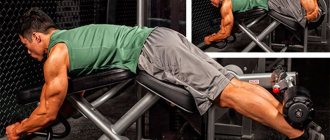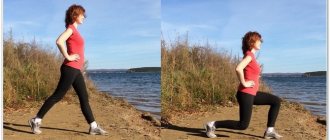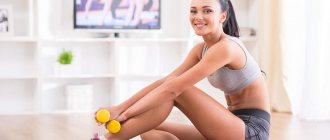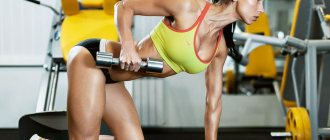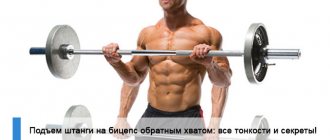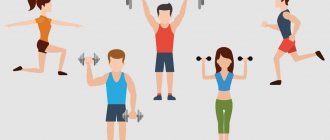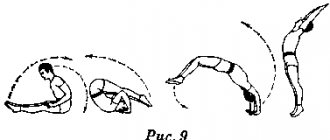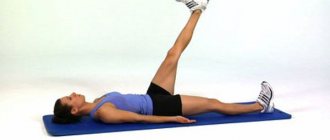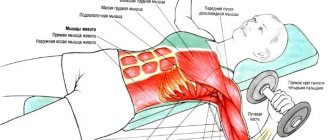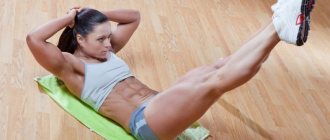Benefits of leg curl exercise
- Effectively trains the hamstrings.
- Forms muscle peak and relief.
- You can perform bending with one leg or with two. By the way, this opportunity allows you to refine the lagging muscle to correct asymmetry. And also the ability to work with one leg allows you to concentrate on performing the exercise without the help of the second leg. This method of training the hamstrings is used by professional athletes.
- This exercise relieves stress from the knee joints and ligaments.
- It is the exercise in a horizontal type machine with a bench with a bend that can stretch the muscles and increase the amplitude, without increasing the load on the knee joints and cruciate ligaments.
- As mentioned at the beginning, there are three versions of the leg curl machine, in which the exercise is performed while sitting, standing and lying down. There is a difference in the simulators. For example, a standing flexion machine allows for greater contraction of the hamstrings, while a lying down flexion machine is structurally more suitable for tall athletes.
Technique for performing leg curls in a lying machine
Before performing a workout, you need to adjust the position of the simulator parts to the athlete’s proportions (height). It is very important that the pad of the roller is located in the center of the Achilles tendon.
- So, having taken the starting position lying face down, you should fix the position by holding the handles for support and rest your feet on the pad of the exercise machine.
- The main movement when performing the exercise will be bending your knees.
- When bending your legs, you need to exhale, and return your legs to the starting position (straighten your knees) slowly and concentrated.
- When pulling your heels towards your buttocks, it is important to perform a maximum contraction in the hamstrings, feeling their tension.
- You should hold the peak of the contraction for a couple of seconds and then slowly straighten your knees.
- It is when performing while lying down on the machine that the technique suffers the most, since it is possible to use the lower back to help, but this is prohibited.
- At least twelve repetitions per set must be performed, since the exercise is performed with light weights.
- It is very important to choose the number of repetitions based on the response of your muscles.
- Straightening your legs completely is not always the best option. Try to keep the muscles constantly toned (in tension) and do not bring the roller to a position in which the working weights of the simulator would rest on the resting blocks of the simulator.
Secrets and subtleties of implementation
The posterior biceps is a rather “capricious” part of the body, so training it requires some ingenuity and a creative approach from the athlete.
Professional athletes know several secrets and subtleties of performing prone bends:
- During each workout, you should change the amount of work;
- for any injuries to the back or spine, the exercise must be done with light weight;
- when performing, you need to firmly hold the handrails with your hands, trying to pull them towards you;
- Use a full range of motion and fully bend your knees during the exercise until contact with your buttocks;
- in order for the muscles of the back of the thigh to be in tension during the training process, the knees should not be fully extended;
- to control the degree of physical activity on the inner or outer thigh, you should change the location of the socks, turning them outward or in the middle;
- during the break between approaches you should stretch your thigh;
- During training, you cannot “fidget” with your pelvis down/up; the exercise should be performed strictly by bending and straightening the knees;
- to prevent possible injuries, you should ensure that the kneecap always hangs slightly;
- if you pull your toes toward you while doing the bends, then your calves will receive most of the load;
- professionals advise to always control your breathing: exhale with maximum effort, that is, while bending, inhale while relaxing, when lowering;
- when bending, you need to move relatively quickly, when lowering your limbs - slowly and thoughtfully, feeling the work of each muscle;
- Beginners should start their first classes with light weights, gradually increasing the load;
- It is not recommended to do the exercise for “owners” of a large or medium belly.
Did you know? World-famous bodybuilder Ronnie Coleman always includes lying leg curls in his training program. However, he uses it only at the end of classes after completing basic training. At the same time, he considers the 13–15 times regime to be the best option for physical exercise.
Recommendations and mistakes when performing the exercise
- Before performing the exercise, you should stretch and warm up your muscles well.
- The first approach should be performed with light weight (if this exercise is performed at the beginning of the workout).
- When placing the roller too close to the heels, the isolation of the hamstrings is disrupted, and the calf muscles are involved in the work. This is a disadvantage. Because of this, the effectiveness of the exercise decreases. The calves tire faster and prevent the biceps femoris from being fully trained.
- When performing the exercise on a horizontal bench, the hip joints should be at the very “break” of the bench.
- You need to perform the exercise concentrated, without jerking.
- It is very important to ensure that the gluteal muscles and lower back are not involved in the work. To do this, do not lift your pelvis off the bench.
What muscles work
The main muscle work in the exercise is to bend/extend the legs at the knee.
The muscles most involved are:
- Biceps (located on the outer side of the back of the thigh - biceps).
- Semimembranosus (located on the inner side of the back of the thigh).
- Semitendinosus (located on the inner side of the back of the thigh, covering the semimembranosus muscle).
- Gastrocnemius (upper and middle part of the back of the lower leg).
The stabilizers are the muscles of the upper body (lower and middle parts of the trapezius and serratus anterior muscles, biceps).
Thanks to regular exercise, the relief of the back surface of the thigh is revealed, visual proportions are leveled (especially in the back), and the risk of injury to this muscle group when performing other exercises is reduced.
Standing leg curl techniques
The peculiarity of the simulator is that it allows you to work out each leg separately.
- Set the required weight of the slabs, start with the minimum - approximately 5 kg.
- To begin, take the starting position in the machine: place the Achilles tendons in front of the rollers to bring the heel towards the buttocks.
- Press your thighs into the upper rollers so that the rollers are placed above your knees. Having previously adjusted the simulator to your own body proportions.
- Rest your elbows on the pillows and grab the special handles.
- Start with one leg, lift your foot off the floor and exhale, lift your heel towards your buttocks, contracting your hamstrings. If the working weight allows, take a short break at the peak of the contraction.
- As you inhale, slowly straighten your knee, lowering your foot without touching the floor.
- The upward movement can be faster, and the downward movement slower.
- Complete the required number of repetitions and immediately begin performing on the second leg.
Work of muscles and joints
The main working muscle masses are the muscles of the back of the thigh and gluteal muscles, which work in isolation in leg curls while lying on the stomach. Of course, many other adjacent muscle groups are also innervated, but their function in this case is limited to stabilizing the position of the body. In many ways, this is what predetermines the “work” mode in leg curls, since such isolation of the working muscle group does not allow it to achieve its maximum innervation. The bottom line is that in isolation exercises, the ligaments, joints and skeleton as a whole are in a vulnerable position, so the nervous system does not send out such powerful nerve impulses as the muscle can “digest.” Accordingly, it is impossible to achieve the same muscle innervation as can be achieved in the “base”, in “isolation”, and therefore, you have to work in a more voluminous mode.
The risk of injury is also affected by the fact that when performing lying leg curls, the main load falls only on the hip joint, although mechanical work is done in the knee. The fact is that the joint that is located above the working muscle group always receives the load. And, in general, you can make sure of this by touching your gluteal muscle, although you can touch someone else’s muscle if its owner doesn’t mind, or if you are willing to take a risk. When bending the legs, the gluteal muscle will be tense, which indicates that it is involved in bending the leg, and since the buttocks are attached to the hip joint, and not to the knee, it is logical to suspect that it is receiving the load and not the knees. So be careful, keeping in mind that your pelvis does not protect anything, and if something happens it can get injured.
Features of the technique of bending legs in a sitting position
Exercise machines from different manufacturers differ slightly from each other: some have hip attachments located above the knees, while others have them below the knees. But overall the technology remains the same. The main thing is to set the simulator to your own proportions, that is, height.
- To begin, set your working weight.
- Sit on the seat with your lower back firmly pressed against the back of the machine.
- Place your feet on the bottom roller, touching your Achilles tendons.
- If it is intended to be secured above the knees, then press the thigh clamp at the desired level, without pressing too hard on the muscles, but also so that there is no looseness.
- As you exhale, without bending your lower back, bring your heels under the seat of the exercise machine as much as possible—bringing them closer to your pelvis. Feel the peak of the contraction, try to hold for a second.
- As you inhale, slowly straighten your knees, but not completely, the main thing is not to “slam” the plates.
How to replace the lying leg curl exercise in the simulator
Standing leg curl with weights
The simplest option, which can be an alternative to bending your legs in a machine, is to work with weights while standing. It is necessary to bend your legs, bringing your heels as close as possible to your buttocks.
Incline dumbbell leg curls
The option with a dumbbell on an incline bench is intended, rather, for the gym. With the abdominal bench set at 45 degrees, you need to lie on your stomach and place a dumbbell between your ankles. As with any curl, your heels should be brought toward your buttocks.
Lying dumbbell leg curl
This is more of a home option, in which you can also use a dumbbell between your ankles or leg weights. As usual, the heels are brought to the buttocks, only while lying on the floor or a horizontal bench.
Leg bending with a fitness band
The elastic band can be hooked onto a vertical support, for example, onto a furniture leg. This exercise is best performed while standing, similar to the first version of the exercise with weights.
Leg bending in the lower block of the crossover
You can perform this option only in the gym, but at the same time use two options, both standing at the support and lying on the mat.
